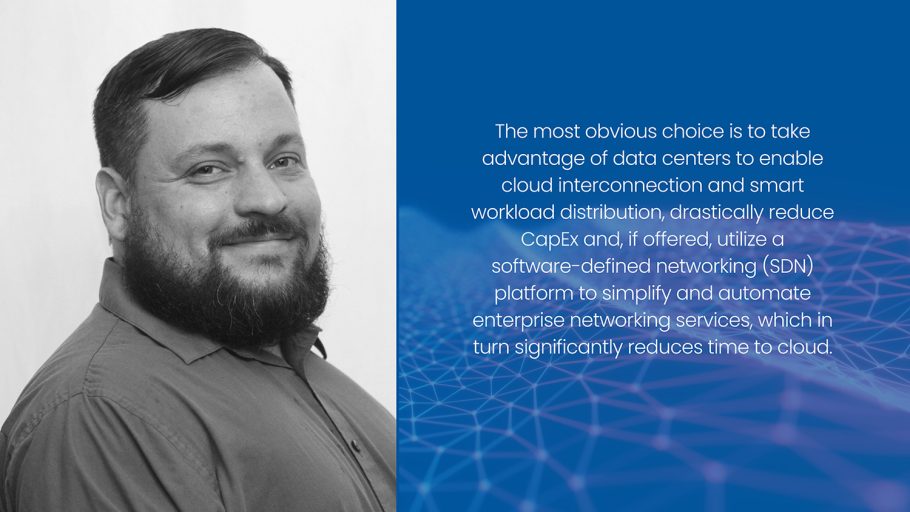Veteran network engineers would probably smile wryly thinking about old IT jargon like “road warrior,” “hub-and-spoke,” or “server room.” Remote work, distributed networks, data center, and cloud have taken their place, along with the focus of this article: virtualized interconnection.
Interconnection has become extremely important to enterprises as they transition to hybrid IT infrastructures. However, as networking professionals will tell you, connecting on-premises data centers to private clouds in colocation and multiple public cloud instances is complex, time-consuming, and potentially very expensive, which isn’t much to smile about.
There is a solution: leveraging Layer 3 connectivity and virtualization through a data center provider. Doing so enables enterprises to reduce costs, achieve the agility they need, and improve time to cloud—which is the amount of time it takes from the moment an enterprise decides to get cloud connectivity to the moment it moves data and workloads to and from cloud(s).
The difference between time to cloud and time to market is subtle. I make the distinction because the faster you get to clouds, the sooner you get to the market—your digital ecosystem, remote workforce, and the entities you do business with across a distributed network.
The basics of Layer 2 and Layer 3 connectivity
The Internet is virtually a utility these days—and, an essential service like the public water supply. Most people don’t understand, nor need to understand, how either one works. They just know that you open the tap to get water and you turn on your computer, TV, phone, or smart watch to access the Internet. On the other hand, enterprise network engineers need to understand Layer 3 and how to use it best, because Layer 3 is the conduit that brings this essential service to people and businesses almost everywhere.

The Open Systems Interconnection (OSI) model describes seven “layers” of a networking system, with each layer representing a different type of networking functionality. Layer 3 is called the network layer, and it is where routing of logical addresses occurs, such as Internet Protocol (IP) addresses. Routers are not only the devices most associated with Layer 3, but also the equipment necessary to move data and workloads through a private network to the Internet and, in combination with all the equipment in each point of presence (POP), through the Internet itself.



